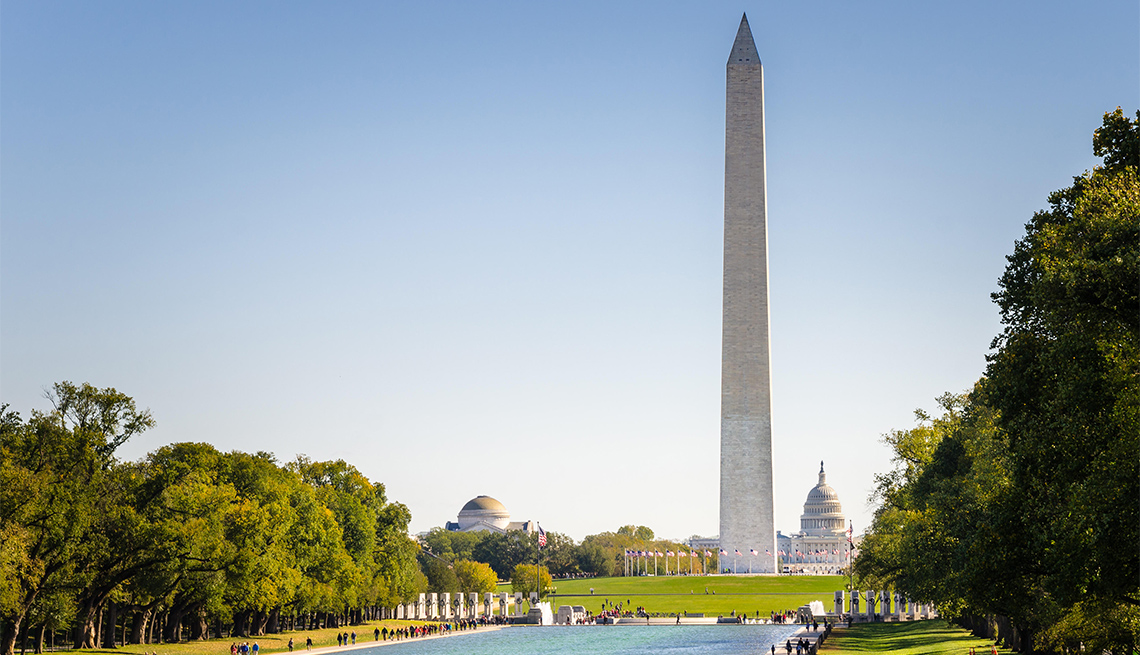
Washington, d. C. Trip planner: a guide to the capital
- Select a language for the TTS:
- UK English Female
- UK English Male
- US English Female
- US English Male
- Australian Female
- Australian Male
- Language selected: (auto detect) - EN
Play all audios:

Buy advance tickets for shows at Ford’s (it’s still a working theater), the Kennedy Center, National Theatre, Arena Stage or Warner Theatre to ensure a seat for these acclaimed stages.
WAYS TO SAVE: Buy a Washington, D.C. Sightseeing Pass for one to three days, starting at $66. It can save you as much as 50 percent on tickets, and entitles you to a hop-on, hop-off Big Bus
tour of notable landmarks and admission to more than a dozen attractions that include George Washington’s Mount Vernon home in Virginia and a Potomac River cruise. SAFETY Tourist areas, such
as the museum-packed National Mall, are generally quite safe, with city, park, Secret Service and Capitol Hill police present and visible. Still, pack your street smarts. Avoid carrying
dangling purses or bags, and keep smartphones and wallets secure. The District often hosts protests and rallies, which can range from small to very large. Stay tuned to local media that can
tell you what to expect, especially in the case of marches where large crowds are expected. GETTING AROUND Renting a car is not a smart option, as D.C. parking is limited and costly unless
you have handicapped tags. Metrorail has six color-coded train lines covering 188 miles and 91 stations and is the most convenient way to reach many of the attractions in and around the
city. It’s safe, clean, relatively inexpensive and easy to navigate. Metro no longer offers single-ride paper fare cards — each rider must have a reloadable SmarTrip card, which can be
purchased or loaded on the SmarTrip app online or in stations. During commuting hours, rides cost a minimum of $2 and a maximum of $6 in each direction, depending on your route. Those 65 and
over can buy a Senior SmarTrip card at the Metro Center station. It offers 50 percent off peak Metro fares, $1 fare on Metrobuses and $3.75 on Airport Express Metrobuses. All buses are
equipped with ramps and wheelchair areas. You can take abundant D.C. taxis, whose base fare is $3.50 plus a current $1 fuel surcharge. Call ahead for a cab that can carry a wheelchair. Or
use a ride-hailing company like Lyft or Uber, but note that rates rise considerably during busy hours. It’s not quite Amsterdam, but in recent years D.C. has become a much more bike-friendly
city. SmartAsset ranks it the third bike-friendliest city in the U.S., thanks to protected lanes, signage and policies. Hopping onto a bike share is easier than ever. Capital Bikeshare has
hundreds of docking stations across the District, Maryland and Virginia, and offers an $8 24-hour pass. More recently, companies such as Lime, Jump and Spin have established “dockless”
bikes, mopeds or scooters, which eliminate the need to find a station to leave your rental when you’re done. Many visitors do a lot of walking. The Mall is bigger than it looks — stretching
more than 2 miles from the Lincoln Memorial to the Capitol — so comfortable shoes are a must. ACCESSIBILITY D.C. prides itself on being one of the most accessible cities in the world. Except
for a few historic neighborhoods where you’ll find brick sidewalks, they are mostly smooth and even, with curb cuts at intersections. Museums and monuments comply with the Americans With
Disabilities Act. Scootaround offers scooter and wheelchair rentals at rates starting under $30 a day. Cars with disability tags park for free at metered spaces.
